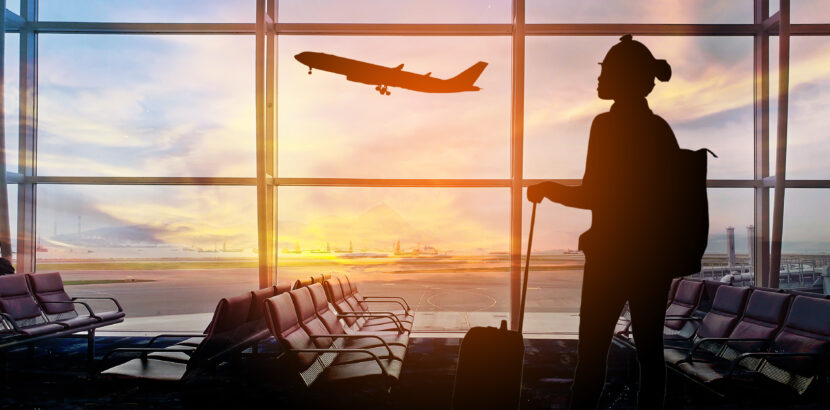NEW DELHI — IATA has updated its 2025 airline industry financial outlook, showing improved profitability over 2024 and resilience in the face of global economic and political shifts.
Highlights from the expected 2025 financial performance include:
- Net profits at $36 billion, improved from the $32.4 billion earned in 2024, but slightly down on the previously projected $36.6 billion (December 2024).
- Net profit margin at 3.7%, improved from the 3.4% earned in 2024 and the previously projected 3.6%.
- Operating profits at $66 billion, improved from an estimated $61.9 billion in 2024, but down from the previously projected $67.5 billion.
- Total revenues at a record high of $979 billion (+1.3% on 2024, but below the $1 trillion previously projected).
- Passenger load factors are expected to reach an all-time high in 2025 with a full-year average of 84%
- Total traveller numbers reaching a record high 4.99 billion (+4% on 2024, but below the previously projected 5.22 billion).
“The first half of 2025 has brought significant uncertainties to global markets. Nonetheless, by many measures including net profits, it will still be a better year for airlines than 2024, although slightly below our previous projections,” said Willie Walsh, IATA’s Director General.
Walsh said the biggest positive driver is the price of jet fuel which has fallen 13% compared with 2024 and 1% below previous estimates.
The airline sector may be making $36 billion in profit, “but that equates to just $7.20 per passenger per segment. It’s still a thin buffer and any new tax, increase in airport or navigation charge, demand shock or costly regulation will quickly put the industry’s resilience to the test,” said Walsh. “Policymakers who rely on airlines as the core of a value chain that employs 86.5 million people and supports 3.9% of global economic activity, must keep this clearly in focus.”
He added that the real average return airfare (in 2024 US dollars) is expected to be $374 in 2025. This is 40% below 2014 levels.
TRAVEL DEMAND TRENDING UP
- IATA’s April 2025 polling data supports projections for demand growth …
- Some 40% of respondents expect to travel more over the next 12 months than they did in the previous 12-month period.
- Some 47% of respondents expect to spend more on travel over the next 12 months than they did in the previous 12 months.
- Although 85% expected trade tensions to impact the economy in which they reside and 73% expect to be personally impacted, 68% of business travellers (50% of those polled) expected increased business travel amid trade tensions to visit customers, and 65% said trade tensions would have no impact on their travel habits.
SUPPLY CHAIN ISSUES
The aircraft backlog exceeds 17,000 (up sharply from the 10,000-11,000 pre-pandemic), with an implied wait time of 14 years. IATA noted that “should states exit from a multilateral agreement exempting aircraft from tariffs, supply chain constraints and production limitations could be further aggravated.”
In 2025, 1,692 aircraft are expected to be delivered. “Although this would mark the highest level since 2018, it is almost 26% lower than year-ago estimates. Further downward revisions are likely, given that supply chain issues are expected to persist in 2025 and possibly to the end of the decade,” said IATA.
“Manufacturers continue to let their airline customers down. Every airline is frustrated that these problems have persisted so long. And indications that it could take until the end of the decade to fix them are off-the-chart unacceptable!” said Walsh.
According to IATA’s Regional Roundup, all regions are expected to deliver collective net profits in 2025. Most will see their financial performance improve compared with 2024, with Latin America being the exception. Profitability, however, varies widely by carrier and by region.
North America will generate the highest absolute profit among the regions even as it is expected to be affected by a slowdown in the U.S. economy, with increased tariffs likely to erode both consumer and business sentiment, dampening consumption and investment. The persistent shortage of pilots and engine reliability problems, particularly in the low-cost sector, will limit growth in the region.
MORE SURVEY RESULTS
An April 2025 public opinion poll (commissioned by IATA covering 14 countries with 6,500 respondents who have taken at least one trip in the last 12 months) revealed that 97% of travellers expressed satisfaction with their travel (58% indicating they were highly satisfied). Not only that, but 89% agreed that air travel makes their lives better, 81% appreciated the availability of choice in travel planning, and 78% agreed that air travel is good value for money.
Here’s a look at more poll results: 90% agreed that air travel is a necessity for modern life; 90% agreed that air connectivity is critical to the economy; 84% care about the success of the aviation industry; and 88% care about their ability to fly in the future.
The air transport industry is committed to its goal of achieving net zero CO2 emissions by 2050. Travellers are expressing high levels of confidence in this endeavour with 81% agreeing that the industry is demonstrating a commitment to work together to achieve this ambitious aim. Some 77% agreed that aviation leaders are taking the climate challenge seriously, significantly above the 64% recorded for government leaders and 60% for the oil sector.

